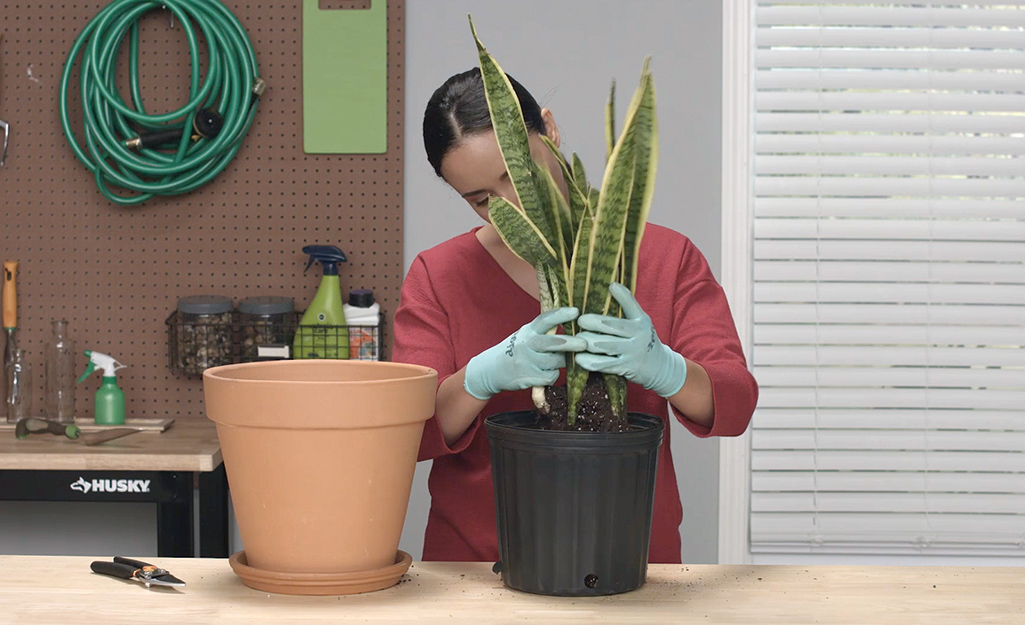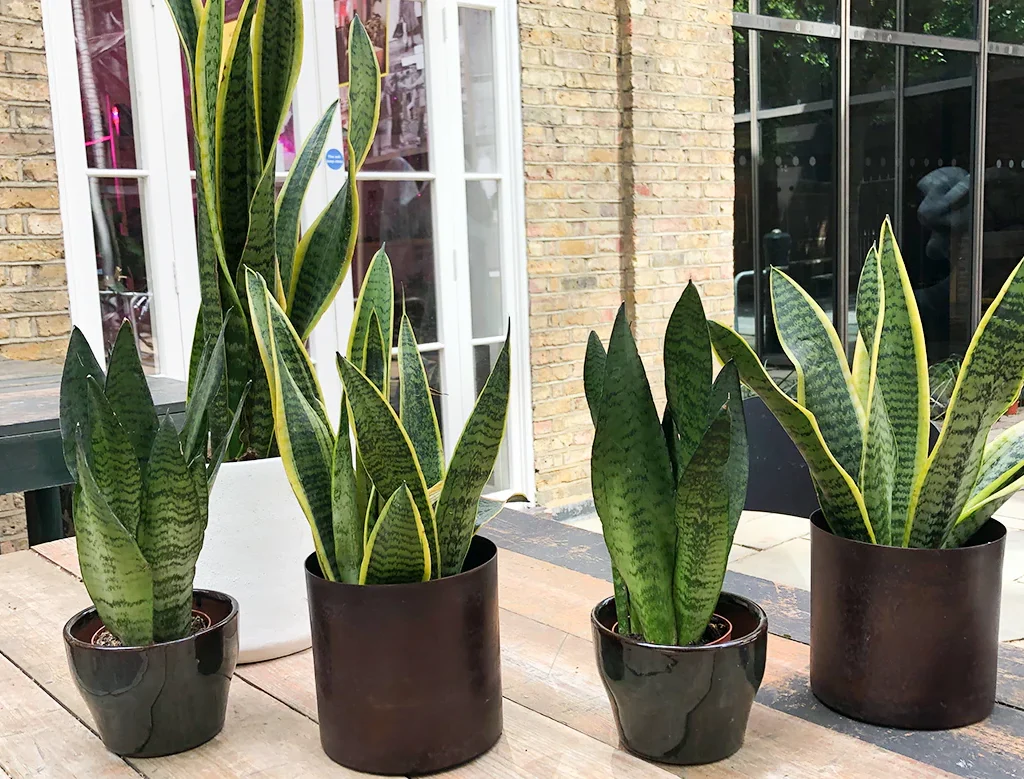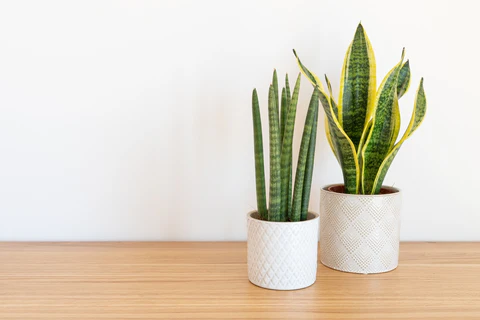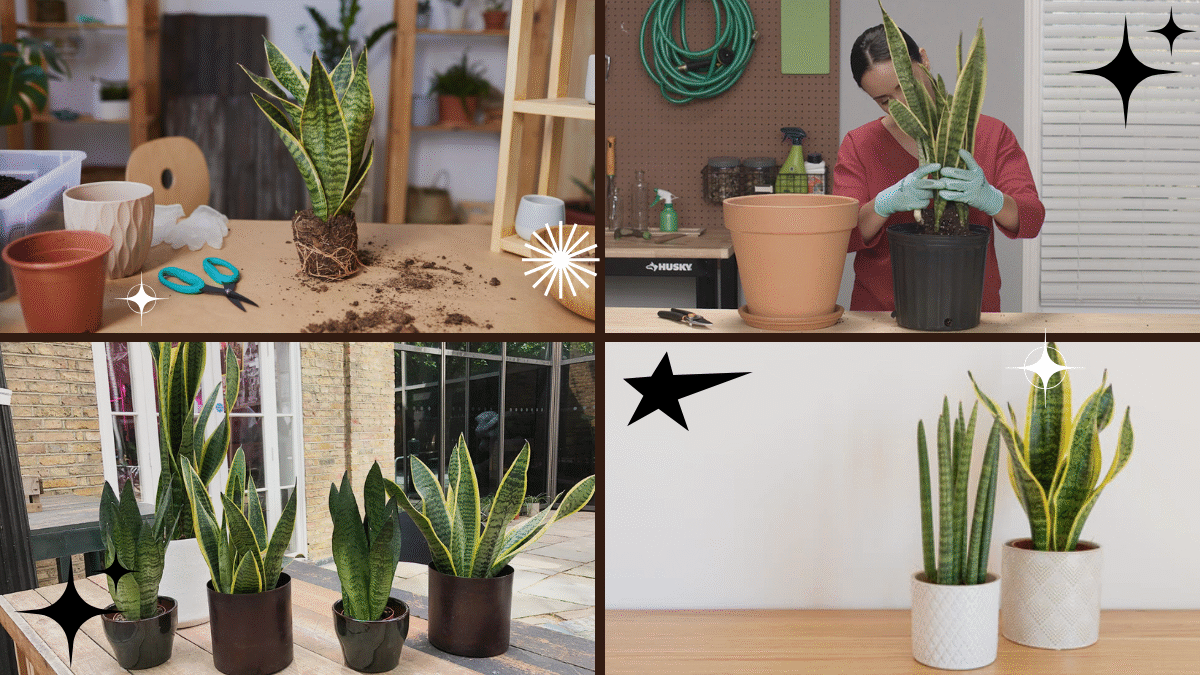If you’re hunting for an indoor plant that’s tough, beautiful, and practically impossible to kill, the Snake Plant deserves a prime spot in your home. Also known as Sansevieria or Mother-in-Law’s Tongue, this sculptural houseplant is famous for its sword-like leaves and air-purifying superpowers.
The best part? Snake Plants thrive on a little neglect and can survive in spots where other plants might struggle. Whether you’re a seasoned indoor gardener or a total beginner, this detailed guide will show you how to properly care for a Snake Plant — naturally, easily, and successfully.

Why Choose a Snake Plant?
Before we jump into care tips, let’s highlight a few reasons why Snake Plants have gained worldwide popularity:
- Air-Purifying: Removes toxins like formaldehyde, benzene, and xylene from the air.
- Low Maintenance: Tolerates low light, irregular watering, and varied temperatures.
- Stylish Appearance: Its tall, architectural leaves suit modern, minimalist, and boho decors.
- Drought-Resistant: Stores water in its leaves, making it one of the easiest houseplants to grow.
- Pet Consideration: Note — while hardy for humans, Snake Plants are mildly toxic to pets if ingested.

Getting to Know the Snake Plant
The Snake Plant (Sansevieria trifasciata) hails from tropical West Africa, where it thrives in arid, rocky soil. In the wild, it survives on minimal water and partial shade, which makes it perfectly suited for indoor living.
There are multiple varieties, including:
- Sansevieria trifasciata ‘Laurentii’ (green leaves with yellow edges)
- Sansevieria cylindrica (cylindrical, upright leaves)
- Sansevieria ‘Moonshine’ (pale, silvery leaves)
- And many others, each with unique leaf patterns and colors.

Ideal Growing Conditions for Snake Plants
1. Light Requirements
Snake Plants are remarkably adaptable.
- Prefer: Bright, indirect light.
- Tolerate: Low-light corners, artificial light, or shady spots.
- Avoid: Prolonged direct sunlight, which can burn the leaves.
Tip: A Snake Plant in bright indirect light will grow faster and develop richer leaf color.
2. Temperature and Humidity
This plant loves warm, dry conditions.
- Ideal temperature: 70°F to 90°F (21°C to 32°C)
- Can tolerate temperatures down to 50°F (10°C), but avoid cold drafts and frost.
- Thrives in average indoor humidity.
Pro tip: During winter, keep your plant away from drafty windows and heating vents.

Choosing the Right Soil and Pot
Snake Plants are susceptible to root rot, so well-draining soil is essential.
Recommended soil mix:
- Cactus or succulent potting mix.
- Or, make your own blend: 2 parts regular potting soil + 1 part perlite or coarse sand.
Pot selection:
- Choose a pot with drainage holes.
- Terracotta pots are excellent as they allow excess moisture to evaporate.
How to Water a Snake Plant Properly
The golden rule for Snake Plants: less is more.
Watering tips:
- Allow the soil to dry out completely between waterings.
- In summer: Water every 2–3 weeks.
- In winter: Water once a month or less.
- Always empty the saucer to prevent water from sitting at the bottom.
Signs of overwatering: Mushy leaves, yellowing, or root rot.
Signs of underwatering: Wrinkled, dry, or curling leaves.
Ideal water: Use room-temperature filtered, distilled, or rainwater when possible.
Natural Feeding and Fertilizing
Snake Plants are not heavy feeders but benefit from occasional nutrients during their active growing season (spring to summer).
Natural fertilizer ideas:
- Organic liquid houseplant fertilizer diluted to half strength, once every 4–6 weeks.
- Or compost tea or fish emulsion for a chemical-free option.
No fertilizer needed during fall and winter when the plant is dormant.
Pruning and Grooming
Minimal pruning is needed, but occasional grooming keeps your Snake Plant healthy.
How to prune:
- Remove damaged or yellow leaves by cutting them at the soil line with sterilized scissors.
- Wipe leaves with a damp cloth to remove dust and improve photosynthesis.
Pro tip: Always prune damaged leaves from the base, not the middle.
How to Propagate Snake Plants Naturally
Snake Plants are among the easiest plants to propagate.
Three simple methods:
1. Leaf Cuttings in Water
- Cut a healthy leaf into 4-inch sections.
- Place the cut end in water.
- Wait for roots to develop over several weeks.
- Pot in soil once roots are 1–2 inches long.
2. Leaf Cuttings in Soil
- Dip cut end in rooting hormone (optional).
- Plant directly into moist soil.
- Water lightly until established.
3. Division
- Remove plant from pot and gently separate root clumps.
- Replant each division in a new pot.
Repotting Snake Plants
These plants prefer being slightly root-bound but will eventually need a new home.
When to repot:
- Every 2–3 years, or when roots push through drainage holes.
How to repot:
- Remove plant gently from the old pot.
- Shake off excess soil and inspect roots.
- Place in a slightly larger pot with fresh, well-draining soil.
- Water lightly and avoid fertilizing for a couple of weeks.
Common Snake Plant Problems and Solutions
| Problem | Cause | Solution |
|---|---|---|
| Yellowing leaves | Overwatering or poor drainage | Let soil dry; repot in well-draining mix |
| Mushy, soft leaves | Root rot from overwatering | Remove damaged leaves, repot in dry soil |
| Brown tips | Low humidity or chemicals in water | Trim tips; use filtered water |
| Drooping leaves | Cold drafts or underwatering | Move to warmer spot; water thoroughly |
| Stunted growth | Insufficient light | Relocate to a brighter area |
Natural Pest Control
Snake Plants are relatively pest-resistant but can occasionally attract:
- Mealybugs
- Spider mites
- Scale insects
Natural remedies:
- Wipe leaves with a damp cloth.
- Use neem oil spray or insecticidal soap.
- Isolate affected plants if infestation occurs.
Benefits of Growing a Snake Plant Indoors
Not only is the Snake Plant an easy-care beauty, but it also offers health perks:
- Filters indoor air by removing toxins.
- Releases oxygen at night, making it ideal for bedrooms.
- Adds a sleek, modern look to any space.
- Requires minimal care — perfect for busy or forgetful plant owners.
Final Thoughts
Caring for a Snake Plant is wonderfully simple. With just a little attention to light, soil, and watering habits, this resilient plant will reward you with years of sculptural beauty and cleaner indoor air.
Key takeaways:
- Provide bright, indirect light
- Water sparingly and use well-draining soil
- Fertilize lightly during growing season
- Repot when root-bound
- Keep leaves clean and monitor for pests
With these natural, no-fuss practices, you’ll enjoy a thriving Snake Plant that adds timeless elegance to your home.
Would you like me to draft a catchy meta description or a Pinterest-friendly caption for this post too? I’d be happy to help!





Leave A Comment